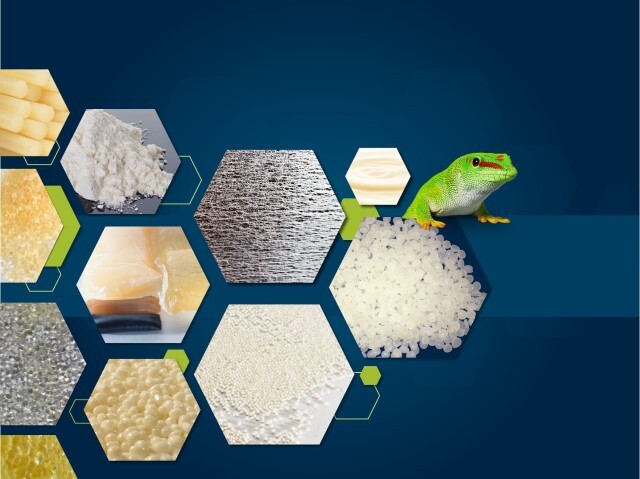Sustainable Flexible Packaging Enabler
Context and trends regarding Sustainable Flexible Packaging
The flexible packaging industry faces urgent challenges driven by strong environmental and societal drivers.
We are fighting pollution and preserving resources via a Circular Economy.
Today, the packaging is not recycled enough, particularly flexible packaging. The entire flexible packaging value chain works to enable and improve packaging recyclability without compromising food preservation, food safety, and performance. Bostik seizes this challenge in collaboration with the entire value chain, aiming to become the adhesive and sealant provider of choice for sustainable and circular packaging.
Fighting Climate Change.
The Intergovernmental Panel on Climate Change concluded in its August 2021 report that the climate is changing worldwide and faster than expected. Also, the packaging industry is called to contribute with solutions featuring lower GHG emissions while continuing to preserve food, which is already a solid contributor to emissions reduction.
Bostik is an Arkema company, and we strongly commit to reducing our CO2 emissions by 38% by the end of 2030, compared to 2015.
Bostik works on adhesive solutions with reduced CO2 emissions, including providing higher efficiency for emissions reduction at our customer's operations. It also involves developing adhesives based on raw materials obtained from renewable sources (biobased). This will contribute to the EU's target of reaching carbon neutrality by 2050.
Is your flexible packaging reducing your environmental footprint?
Our concrete solutions today:
• UHP 200 Modular System, designed for retort application, can cure at room temperature within a very short time. Therefore, this translates into energy-saving and lower CO2 emissions in our customers' operations.
FEATURED PRODUCT: UHP 200 MODULAR SYSTEM
• In Asia, we help our customers to switch from solvent-based adhesives to solvent-free adhesives at equivalent performance.
• We use Life Cycle Assessments (LCA) as tools for improvement in our efforts to reduce the GHG emissions of our products. Using raw materials from renewable sources (biobased) where feasible is one way to reduce the CO2 footprint of our adhesive solutions.
Safety and Regulatory at the heart of our flexible packaging adhesives developments.
At Bostik, we never compromise with consumer safety. We are committed to the responsible stewardship of our products. Therefore we have always focused on predicting future trends, tightening regulatory constraints, and developing product ranges that ensure consumer and environmental safety.
The check for fit to today's and future regulatory legislation is done very early in the product development process by our R&D team. Our regulatory affairs experts with many years of experience identify the best formulation options to assure people's safety while meeting demanding customer expectations.
We already provide concrete solutions for sustainable flexible packaging regarding safety and regulations:
We care about offering products without substances considered of concern, such as BPA, Glymo and PAA (primary aromatic amines).
• The UHP 200 Modular System can be PAA-free, depending on the co-reactant used.
FEATURED PRODUCT: UHP 200 MODULAR SYSTEM
• The aliphatic solvent-free adhesive system: Herberts 2K-LF 760, retortable grade is also PAA-free.
FEATURED PRODUCT: Herberts 2K-LF 760
Allow circularity through the recycling of flexible packaging.
Flexible packaging must be collected, sorted, regenerated, and recycled at scale to fit a Circular Economy. For this to occur, most of today's flexible packaging must be redesigned from multi-materials structures into mono-material ones for which recycling streams are in place. This must be made without compromising on food protection and packaging performance. Bostik is at its customer's and brands' side providing adhesive solutions and helping to develop recyclable packaging.
Adhesives are key enablers of packaging recyclability, which comes with technological challenges.
- For mechanical recycling, adhesives must ensure uncompromised food protection and packaging performance while maximizing the recyclate quality required for its re-use, thus circularity. De-bondable laminating adhesives may also be combined with specific advanced recycling processes to enable layers separation and recovery of different materials.
Our concrete laminating adhesives solutions regarding circularity:
- Bostik was a pioneer and developed a solvent-free adhesive system called SF10M (A+B) which was tested and certified by Recyclass to fit the polyethylene films recycling stream. This solution is unique and commercially available today.
FEATURED PRODUCT: SF10M (A+B)
We firmly believe in collaboration for fast and coherent solutions; therefore, Bostik is an active member of different innovation consortiums. To formulate the best adhesives for mechanical recycling, we complement our internal R&D with collaboration with universities and reputable recycling experts.
Download The Case Study of Bostik SF10M and Innovia here
The importance of converting efficiency for Flexible Packaging
At Bostik, we firmly believe that sustainability is all about maximizing efficiency and performance, streamlining processes, reducing energy consumption, and thus also, greenhouse gas emissions. Therefore, efficiency is an essential pillar of our Sustainable Lamination Program.
Our concrete solutions to improve efficiency:
• The UHP 200 combined with the aliphatic co-reactant CX cures within a short time at room temperature, without the need for a hot curing room. Besides streamlining and accelerating processes for our customers, it enables energy-saving and reducing GHG emissions.
• Bostik also provides laminating adhesives for film-film laminates that can be cured within a day.




